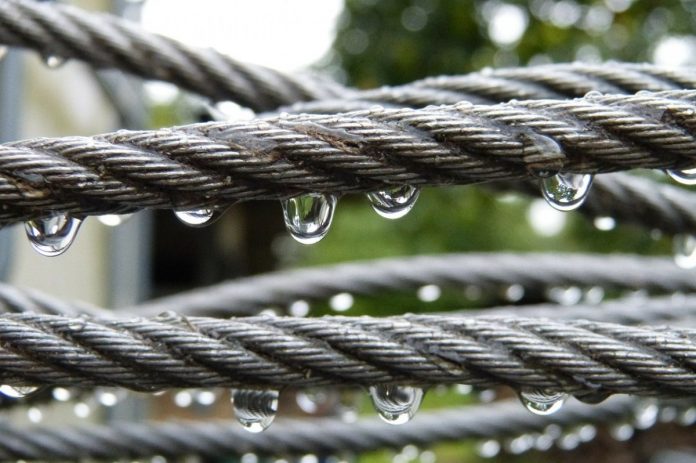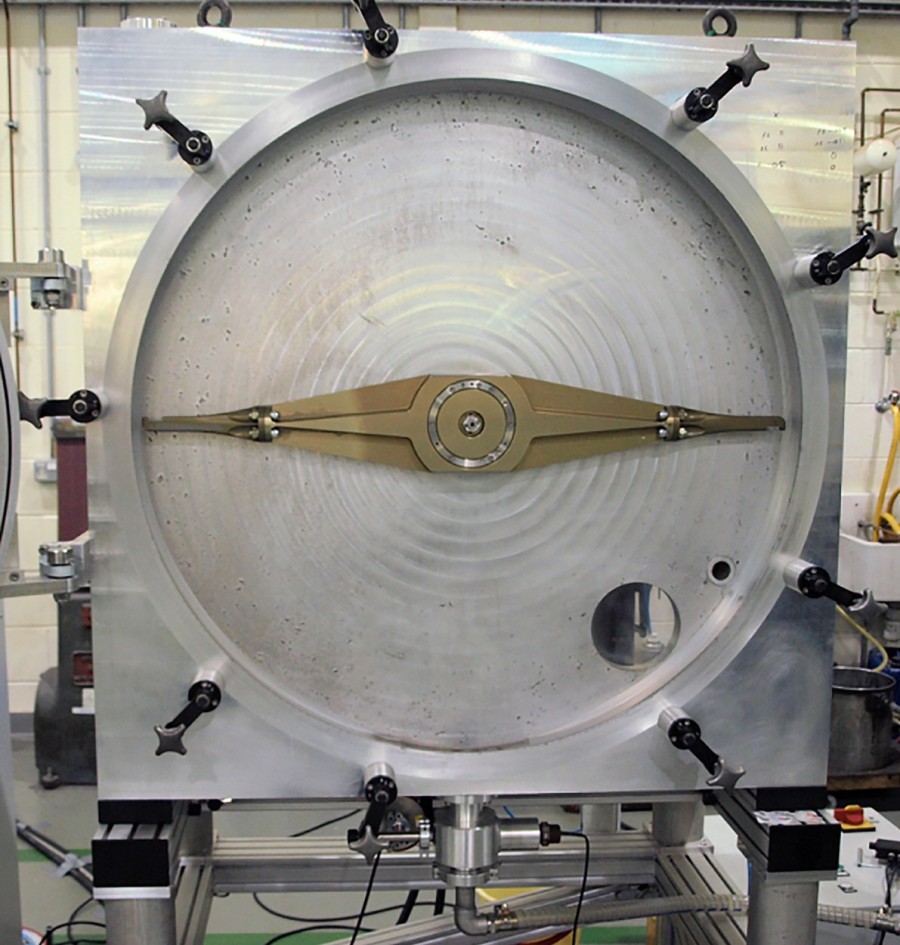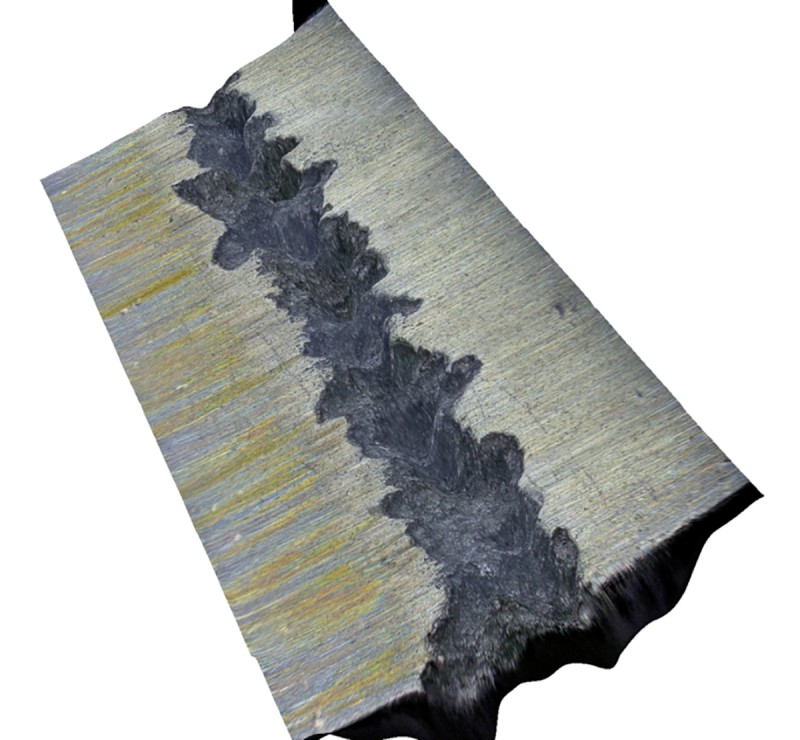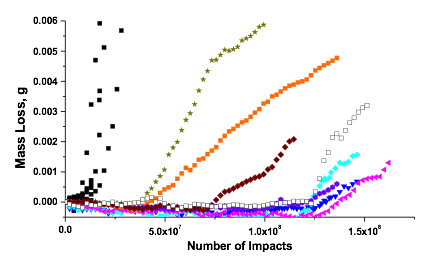Mark Gee, Fellow at the National Physical Laboratory, is exploring new ways to assess and reduce erosion in engineering materials from water impact
It seems to be contrary to common sense that the water which we drink can cause failures in key technological applications, simply from the impact of droplets against the surface of components. Major issues occur in a number of areas, from turbine blades in steam generating plants to wind turbine blades.
In the first case, erosion is caused on the leading edge of a turbine blade by the impact of water droplets that condense from the steam that is driving the turbines. This is compounded by the length of the blades and hence high peripheral speed, which can be supersonic (up to 600 ms-1) in a modern efficient generating plant. Hardened stainless steel is typically used for these blades, but the ends of the blades suffer major erosion damage leading to loss of the correct aerodynamic form and loss of function and efficiency, so that the generators require costly maintenance and repair with consequent loss of generating capacity.
In the second case, erosion is caused by the impact of rain drops on the wind turbine rotor blade. Large turbine blades operate with a peripheral tip speed up to about 100 ms-1. The blades are manufactured from polymeric composites and are treated with low energy polymer coatings to reduce the effects of weathering (icing), erosion and bio-fouling (insects). All these factors change the profile of the blades, leading to significant loss in power generation capability. Currently, although the design requirement is for a 25 year lifetime, these coatings only last about 10 years before the blades need refurbishment.
Protecting engineering materials from water impact
For both of these applications new materials solutions are required. The National Physical Laboratory (NPL) has designed and manufactured a rotating arm test system to test new material systems (Figure 1).
Figure 1: Water drop erosion test system showing rotating arm with samples at the end of arms enabling water droplet erosion testing at speeds up to 500 ms-1. The water droplet nozzle is in the smaller orifice in the lower right quadrant of the chamber (next to a larger observation port)
The test system consists of an aerodynamically shaped rotating arm which has samples clamped a metre apart. The arm is rotated at speeds up to 10,000 rpm to give the necessary sample speed in a chamber which is evacuated to reduce heating from friction with the atmosphere. A jet of water droplets is injected into the chamber across the path of the samples, causing erosion from the impact with the droplets. The damage is monitored by measuring the progression of mass loss throughout the test and the mechanisms of wear are assessed by optical and scanning electron microscopy.
The test system has been used in collaborative projects looking at the development of new material systems. One of these projects was funded by the Technology Strategy Board (now Innovate UK), where new coatings were designed, deposited and tested for steam turbine blade applications. Damage that was obtained on a hardened stainless steel sample is shown in Figure 2.
Figure 2: 3D optical image of wear scar in 15-5 stainless steel with a ground surface finish. The depth of the wear scar was about 500 µm. The length of the wear scar is 8 mm
Good progress in extending the durability of the coatings was obtained (Figure 3). The lifetime of some of the candidate coatings was ten times the original lifetime of the uncoated steel.
Figure 3: Comparison of results for uncoated hardened stainless steel (black squares) compared with samples treated with different candidate advanced coatings. The lifetime is essentially defined by the incubation time before the upturn and increase in mass loss
A second project was funded by the EU Framework project on the development of nanostructured coatings. Again, the NPL test system was used to evaluate the effectiveness of the new coatings that were developed in this project.
Much further work is required to determine the relationship between the make-up of new advanced materials and their water droplet erosion performance. This will be carried out using high speed imaging to look at the details of droplet impact on surfaces, combined with advanced microstructural characterisation techniques to evaluate the materials’ response.
Mark Gee
NPL Fellow
Tel: +44 208 943 6374
Please note: this is a commercial profile














